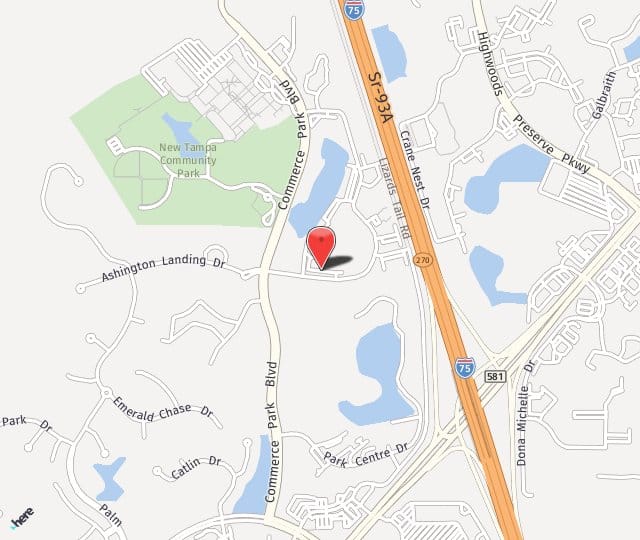While we may not always think that men can be just as self-conscious about their bodies as women, it’s true. Body image is just as important to men as it is to the so-called fairer sex, and men struggling with overdeveloped breasts, or Gynecomastia, often have a hard time accepting and liking their bodies. In fact, what many men who visit Artisan Aesthetics Plastic Surgery & Laser Center don’t realize is that breast reduction surgery is an option for them. Therefore, I’ve prepared an extensive guide on “gynecomastia good candidate” to educate patients about the surgery process, expectations, and recovery phase.
Tampa Gynecomastia Surgery Candidates – The Key Takeaways
Gynecomastia happens when there is an imbalance between the hormones estrogen and testosterone. It’s typically asymmetrical in location regarding the nipples and can make the breasts have a rubbery or firm feel. It usually occurs on both breasts but can sometimes be unilateral, and usually the enlargement is greater on one side than the other, even if both sides are involved.
- Pathophysiology and Etiology: Physiologic, Pathologic, Pharmacologic Causes and Lifestyle Factors.
- Clinical Assessment: Medical History, Physical Examination, Laboratory Testing, and Imaging.
- Candidacy Eligibility: Persistent Gynecomastia, Ruled-out Pathologic Causes, Physical Characteristics, and Psychological Factors.
- Surgical Approaches: Liposuction Alone, Excision Techniques, and Skin Resection.
- Postoperative Outcomes: Immediate Postoperative Period, Early Recovery, and Complete Recovery.
Gynecomastia Good Candidate – What is Gynecomastia?
Gynecomastia, derived from the Greek terms “gyne” (female) and “mastos” (breast), refers to the benign enlargement of male breast tissue. This condition affects approximately 30-60% of males at some point during their lifetime, with prevalence peaks during the neonatal period, puberty, and older adulthood.
While often physiologically benign, gynecomastia can cause significant psychological distress, including embarrassment, social anxiety, and reduced quality of life. This article examines the etiology, diagnosis, and treatment options for gynecomastia, with particular focus on surgical intervention candidacy for patients in the Tampa region. Additionally, learn more about gynecomastia symptoms, causes, and surgical and non-surgical options.
Gynecomastia Good Candidate – Pathophysiology and Etiology
Gynecomastia results from an imbalance in the estrogen-to-androgen ratio, leading to proliferation of glandular breast tissue. This hormonal imbalance may stem from various sources:
1. Physiologic Causes
- Neonatal (maternal estrogen transfer).
- Age-related (declining testosterone levels).
- Pubertal (temporary hormonal fluctuations).
2. Pathologic Causes
- Neoplasms (testicular, adrenal).
- Neoplasms (testicular, adrenal).
- Systemic conditions (liver cirrhosis, renal failure).
3. Pharmacologic Causes
- Anabolic steroids.
- Antiandrogens (spironolactone, finasteride).
- Medications (antipsychotics, antiretrovirals).
4. Lifestyle Factors
- Alcohol consumption.
- Heavier body mass index.
- Recreational drug use (marijuana).
Gynecomastia Good Candidate – The Clinical Assessment
Proper diagnosis involves a comprehensive evaluation:
- Imaging: Mammography or ultrasound when malignancy is suspected.
- Medical History: Onset, duration, associated symptoms, medication use, family history.
Laboratory Testing: Hormonal panel (testosterone, estradiol, LH, FSH), liver and kidney function tests. - Physical Examination: Breast tissue assessment, differentiation from adipose tissue, evaluation for masses or asymmetry.
Tampa Gynecomastia Surgery Candidates
Am I a Good Candidate for Male Breast Reduction Surgery?
Tampa-based surgical centers typically evaluate candidates on an individual basis, considering both objective clinical findings and subjective impact on quality of life. Good candidates for gynecomastia surgery typically present with:
1. Persistent Gynecomastia
- Duration exceeding 12 months, resistant to conservative management
2. Ruled-out Pathologic Causes
- Completion of diagnostic workup, excluding underlying medical conditions.
3. Physical Characteristics
- Good skin elasticity.
- Absence of significant comorbidities.
- Stable weight with BMI preferably below 30.
- Grade II-III gynecomastia (moderate to severe).
4. Psychological Factors
- Documented psychological distress.
- Understanding of potential complications.
- Realistic expectations regarding outcomes.
It’s important to have good general health before any major surgery. Furthermore, you should not be individuals with a heavier body weight without having attempted to lose weight first through exercise or diet. The best candidates have firm, elastic skin that can reshape to the body’s new contours.
Good candidates typically abstain from smoking, consuming steroids, or excessive alcohol consumption, as these substances have the potential to trigger the development of Gynecomastia. If you do partake in any of these activities, Dr. Castor will encourage you to give them up first to see if your breast fullness will go away on its own before scheduling a surgical procedure.
How Does the Male Breast Reduction Surgery Work?
During your consultation, Dr. Castor will walk you through what to expect. The surgery usually only involves liposuction, although he may use various methods depending on your condition. For example, VASER® Liposuction has proven successful. It uses minimally invasive ultrasound technology and produces awe-inspiring results in just one session.
Dr. Castor may use this one-of-a-kind laser to remove the fatty breast tissue without the need for large incisions on the chest. For men with more developed breasts, surgical excision of excess skin may also be needed to achieve the manly contours you desire.
Gynecomastia Surgical Approaches
Tampa surgical specialists typically employ minimally invasive approaches when possible, with technique selection individualized to patient anatomy. Several surgical techniques are employed based on the composition and extent of breast enlargement:
1. Liposuction Alone
- Minimal scarring.
- Utilizes small incisions.
- Shorter recovery period.
- Suitable for predominantly fatty gynecomastia (pseudogynecomastia).
2. Excision Techniques
- Periareolar incision.
- May be combined with liposuction.
- Required for glandular tissue removal.
- Removal of fibrous and glandular tissue.
3. Skin Resection
- Results in more visible scarring.
- Necessary for cases with significant skin redundancy.
- Various pattern techniques (periareolar, vertical, wise pattern).
What Can I Expect After the Surgery?
In general, once removed, the excess tissue is gone for good, and no follow-up surgeries are required. Some discomfort is normal after the first few days of the procedure, but you’ll see immediate positive results.
You can expect minor bruising and soreness, but this will heal after a few weeks. You’ll be able to return to work in several days, but if you’ve opted for excision instead of just liposuction, you may be restricted from certain activities until the incisions heal.
Gynecomastia Surgery Preoperative Considerations
Patients preparing for gynecomastia surgery should:
- Firstly, maintain a stable weight for 3-6 months before surgery.
- Next, stop taking any medicines that could worsen the condition of enlarged breasts in men, but do this under the guidance of a doctor.
- Thirdly, stop smoking at least 4 weeks before and after the surgery.
- Fourthly, avoid blood-thinning medications and supplements.
- Finally, arrange for postoperative assistance and recovery time.
Gynecomastia Surgery Postoperative Course and Outcomes
Recovery typically follows this timeline:
1. Immediate Postoperative Period (1-7 days)
- Pain management.
- Compression garment use.
- Limited upper body activity.
2. Early Recovery (1-3 weeks)
- Continued compression.
- Return to sedentary work.
- Gradual resumption of light activities.
3. Complete Recovery (4-6 weeks)
- Stabilization of results.
- Resolution of most swelling.
- Return to full physical activity.
Tampa Gynecomastia Surgery Candidates – The Consultation
To illustrate, gynecomastia surgery represents an effective intervention for appropriately selected candidates. Particularly experiencing persistent breast enlargement and associated psychological distress. Nonetheless, the Tampa-based patients considering this procedure should undergo a comprehensive evaluation. To further determine candidacy and optimal surgical approach. However, the consultation with board-certified plastic surgeons. Specifically specializing in gynecomastia treatment is essential for achieving optimal outcomes.
Moreover, for Tampa residents considering gynecomastia surgery, thorough research into surgeon credentials and surgical facility accreditation. As well as realistic expectation setting, are crucial preparatory steps in the surgical journey. Besides this, long-term satisfaction rates exceed 90% in appropriately selected candidates. On the other hand, complications occur in approximately 5-10% of cases.
Gynecomastia Good Candidate – Gynecomastia Is Far More Common than You Might Think
It’s a very common condition; in fact, 40 to 60 percent of men have it. Several factors cause Gynecomastia, including certain medications like diuretics and drugs used to treat prostate cancer, and medical conditions like kidney disease, malnutrition, or rare genetic conditions.
Although it’s benign, it can still lower self-confidence and cause embarrassment. Fortunately, Dr. Castor can ease all your worries by performing male breast reduction surgery. As a board-certified plastic surgeon, he has helped many men achieve their ideal body by removing the excess fat in their breasts.
Men, soon, you can be on your way to perfecting your body and gaining self-confidence. Nevertheless, if you’ve concerns and concerns related to gynecomastia good candidate for male breast reduction surgery. Then contact Dr. Castor’s offices in Tampa or New Tampa, Florida, at (813) 971-2000 or schedule a consultation online. Also, visit our gynecomastia before and after picture gallery to view male breast reduction procedure results and patient transformations.


